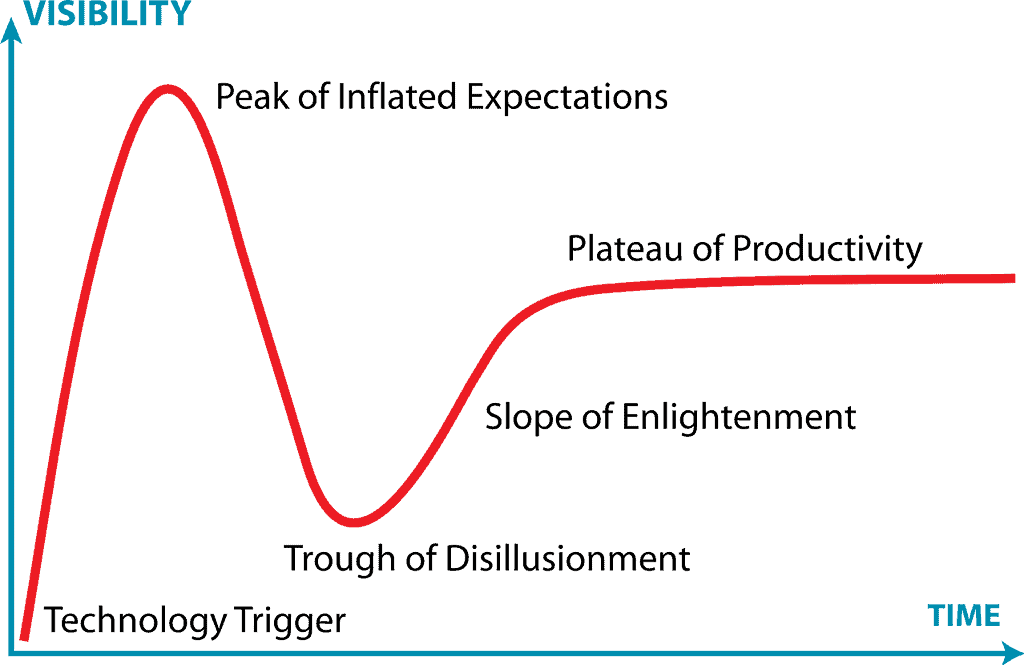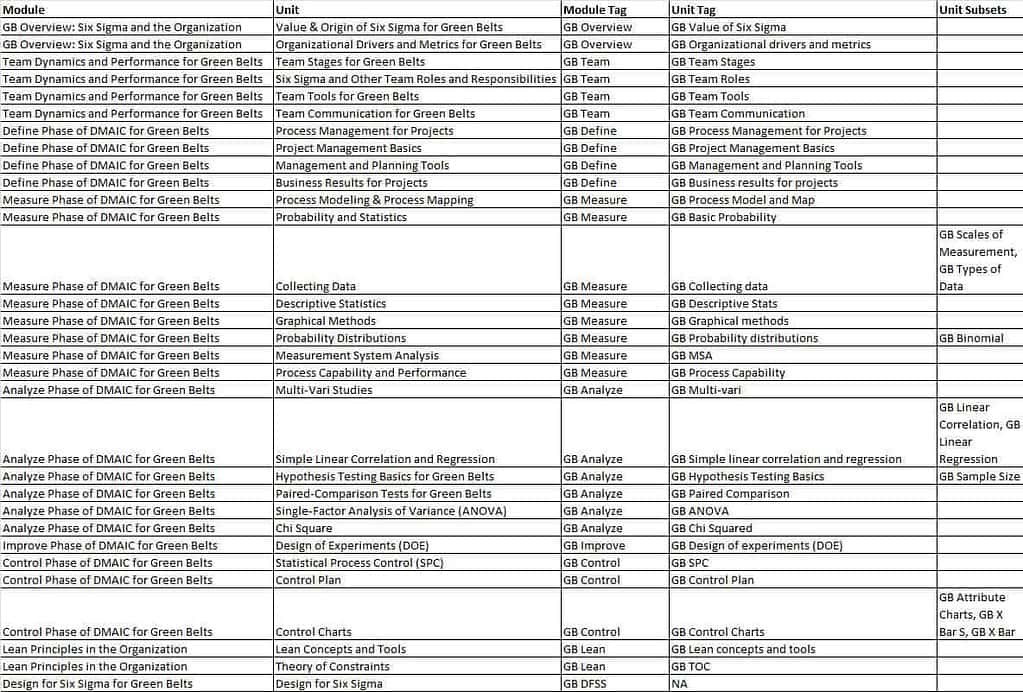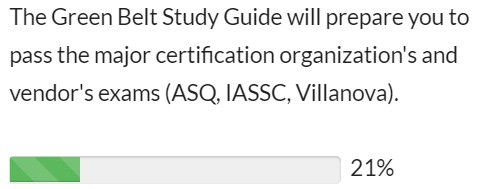There’s a pattern to success. You try some things. You learn. You fail. You learn some more.
Whether you’re training for a 50-mile endurance race, learning to pilot a boat, or trying to pass a Six Sigma exam, it doesn’t matter.
If you focus on continuous improvement, you’ll be better on your Nth attempt than your first.
Most students focus on memorization and theory. They overlook the practical benefits of structured checklists in mastering Six Sigma concepts and methodologies.
And that leads to the Trough of Disillusionment.
What is the Trough of Disillusionment, and How Do You Get Out?
The Gartner Hype cycle discusses the trough of disillusionment regarding technology adoption. But it applies to many things – from new skill acquisition to organizational change.
If you’re preparing for your Six Sigma exam, chances are you’re familiar with the Trough!

Image by Jeremykemp at English Wikipedia, CC BY-SA 3.0
But what if you could get through the Trough of Disillusionment quicker?
But what if you could get through the Trough of Disillusionment quicker?
Being in the Trough sucks. It’s no fun.
Don’t spend more time in it than you need to.
Leverage the Experience of Others
What if you could learn from thousands of people who came before you on the same journey?
What if you could learn from yourself?
Implementing checklists will streamline your study process. It will reduce the time you need to prepare and boost your confidence as you study for your Six Sigma exams.
Harnessing the power of checklists can be the game-changer you need. It can help you ace your Six Sigma exams and excel in your career.
Checklists Improve Outcomes
- Explore real-world examples of how checklists have transformed industries and enhanced performance.
- Understand the critical elements of practical checklists. Learn how to tailor them to your specific needs.
The Checklist Manifesto
“The Checklist Manifesto” book by Atul Gawande explores several key themes:
The Power of Simple Solutions:
Gawande emphasizes the effectiveness of simple tools like checklists in solving complex problems. He also highlights how they improve outcomes in various fields. This applies to medicine, aviation, and construction.
Human Fallibility and Error:
The book discusses human error. It also discusses the limitations of relying only on individual expertise and memory. It highlights the need for structured processes to mitigate errors and ensure consistency.
Standardization and Consistency:
Gawande argues for the importance of standardizing procedures. He also argues for ensuring consistency in tasks through the use of checklists. Standardization helps reduce variation, errors, and deviations from best practices.
Complexity Management:
In a complex world, checklists offer a practical way to manage complexity. They break down tasks into manageable steps. They ensure that critical actions are not overlooked.
Continuous Improvement:
Gawande discusses the iterative process of checklist development. He refines and adapts checklists based on feedback and experience. Continuous improvement ensures that checklists remain relevant, effective, and adaptable to changing circumstances.
Cross-Disciplinary Application:
The principles outlined in the book apply to many industries and disciplines. This shows that checklists are useful across the board for improving performance and reducing errors.
“The Checklist Manifesto” advocates for the widespread adoption of checklists. It argues that checklists are a simple yet powerful tool for improving efficiency, reducing errors, and enhancing outcomes in all aspects of life and work.
A Personalized Study Checklist for Six Sigma Exams

Technology is not at the point where we can download new knowledge to our brains. But by leveraging other people’s experiences via checklists, we can speed up the process.
Here’s how I have helped thousands of people prepare for their Six Sigma exams:
Step 1: Identify the core concepts and methodologies you must master for your exams.
I’ve got you covered here. Each major Six Sigma organization that offers certification publishes BOKs – Bodies of Knowledge. These essential checklists cover every topic you must know on your exam.
Each link goes to a hub page with dozens of links to free material where you can learn what you need to know.
Use the BOKs as a checklist. Go through the material. Dive into any topic you don’t know well enough.
- Six Sigma Yellow Belt Guides
- Six Sigma Green Belt Bodies of Knowledge
- Six Sigma Black Belt Guides Bodies of Knowledge
Step 2: Break down your study materials into manageable tasks and milestones.
Include review sessions, practice exams, and self-assessment checkpoints in your checklist. Use them to track your progress.
You can do this however works for you. Here’s an example of how this is set up in Pass Your Six Sigma Green Belt course:

Using visual indicators of success will help you know exactly how much you have left to go in your studying:

Step 3: Pick the topics you score the worst in and focus there.
You only pass the exam by getting enough points. When you take practice exams, sort the questions you got wrong by category. Then, focus on those topics you got the most wrong. That is a checklist of what you need to study next.
Repeat that process until you can get a passing score on your mock exams.
Here’s what that looks like in my Pass Your Six Sigma Green Belt course.

Access My Exclusive Six Sigma Exam Checklists
Stay organized, focused, and motivated as you work through your checklist. Prepare for success.
Six Sigma Certification Journey: A Checklist on Everything from learning to scheduling your exam
Getting a Six Sigma certification is far more than taking a test. There’s a lot involved. Here’s a simple checklist that you can use to navigate the entire process.
The Six Sigma Exam Preparation Checklist
A Six Sigma exam can be both financially and emotionally exhausting! You DON’T want to take that exam twice! Here’s a checklist for those who are preparing for their exam.
Success in Six Sigma starts with effective preparation and requires a structured approach to learning. Incorporating checklists into your study routine can be the key to unlocking your full potential and helping you achieve your goals.
When you’re ready, there are a few ways I can help:
First, join 30,000+ other Six Sigma professionals by subscribing to my email newsletter. A short read every Monday to start your work week off correctly. Always free.
—
If you’re looking to pass your Six Sigma Green Belt or Black Belt exams, I’d recommend starting with my affordable study guide:
1)→ 🟢Pass Your Six Sigma Green Belt
2)→ ⚫Pass Your Six Sigma Black Belt
You’ve spent so much effort learning Lean Six Sigma. Why leave passing your certification exam up to chance? This comprehensive study guide offers 1,000+ exam-like questions for Green Belts (2,000+ for Black Belts) with full answer walkthroughs, access to instructors, detailed study material, and more.

